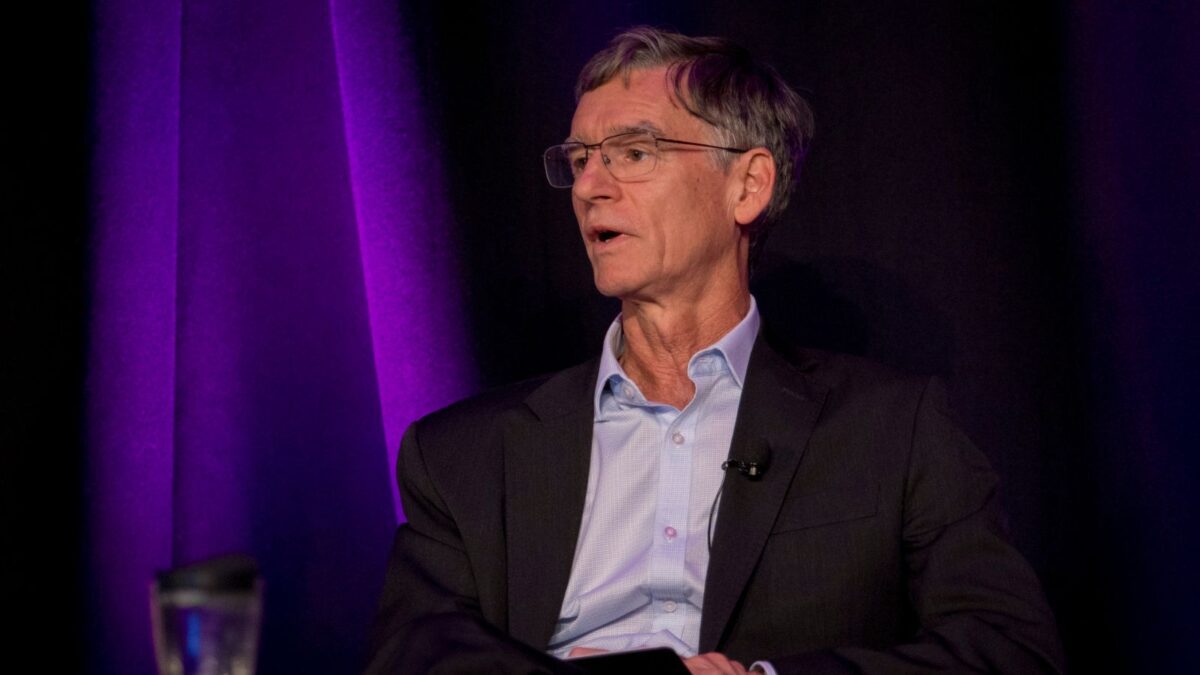What it took to build the new $70b TCorp
Stephen Knight
by Greg Bright
It took a while – 15 months in the evaluation and another 15 months to implement it – but the formation of NSW’s largest fiduciary investment fund within NSW Treasury Corporation (TCorp), with more than $70 billion under management, is starting to deliver benefits in both tangible and intangible areas.
The most tangible benefit from the merger will be the savings due to efficiencies and leverage from the greater scale with service providers, including the rationalisation of custodians and removal of duplication between some external fund managers and consultants.
But, according to Stephen Knight, the chief executive of TCorp, there are other expected benefits. Investment returns will be enhanced, he believes, each contributing entity will enjoy the benefits of the combined expertise, and the NSW Government will get greater visibility of its financial assets and liabilities. Maybe it really is a win win win situation.
Providing more detail and background to the Government announcement last month of completion of the amalgamation project, Knight says that TCorp has changed from being an agency where 75 per cent of its business was to do with debt issuance and 25 per cent to do with funds management, to being one where the two activities are almost equally split 50:50.
The three funds, TCorp, State Super (STC) and Safety, Return to Work and Support (SRWS – formerly Workcover), retain their boards, strategy and asset allocation, with STC’s investment chief, Mark O’Brien, the new general manager of investments in the merged activity. STC, which retains its defined contributions fund, also retains Lisbeth Rasmussen as investment head.
TCorp has three arms directly reporting to Knight: O’Brien’s investments; Jonathan Green as general manager of investment implementation and operations; and, Steve McKenna as general manager of investment and client strategy.
O’Brien’s area is split into five asset class groupings: equities, headed by Peter Laity; cash and fixed interest, where James Murray is in charge of liability management, derivatives and defensive assets, and Simon Murphy is in charge of internal management; infrastructure and direct investments headed by Lianne Buck; and liquid alternatives headed by Ondre Ozer.
One of Green’s department’s early tasks will be to manage the transition from three separate custodians to a common custodian. The old TCorp uses BNP Paribas, STC uses JP Morgan and SRWS uses State Street. The process will involve a rigorous tender and is expected to commence within the next six months. Knight says he expects material savings from moving to one larger contract and also through streamlining the manager line-up among the funds.
Steve McKenna’s investment and client strategy team , consisting of seven professionals, and is a new area for the funds. “Because we are now a larger and more complex beast,” Knight says, “we need this third unit to be a form of internal consultant. They will work closely with our major clients providing intellectual input and ideas to support the investment process, given the distinct needs of the different funds.”
Prior to the amalgamation of the investment functions, TCorp managed funds for about 140 NSW Government agency clients. It now has STC as a single client as well, and the five SRWS funds as clients.
He says that the amalgamation is enchanced by the fact that there is a lot of complementarity in the expertise of the three investment and operations teams. For instance, STC, as a closed fund, was well experienced in direct investments and infrastructure. TCorp was well versed in capital markets and fixed interest and SRWS in liability driven investing. Plus, TCorp already managed money for four of the five SRWS funds. The underlying funds now managed by TCorp are a mix of closed-scheme funds and growing funds, such as the NSW Self Insurance Fund and the Lifetime Care and Support Fund. .
“The efficiencies to be derived from streamlining the management of custodians and fund managers should be relatively easy to quantify” Knight says. “With investment returns it’s harder to quantify the benefits, but there is evidence from around the world that there are distinct advantages from scale, including access to deal opportunities. Also, pooling the investment expertise has clear benefits and offers a greater strength and depth of capability than any of the three agencies previously enjoyed.”
Getting the investments and operations teams together, which comprise 45 staff across the three agencies, was seen as a priority. The CEOs of the agencies agreed early on that co-location of the teams would be an important ingredient for success. The teams from SRWS and STC shifted into TCorp’s premises between September and December last year, providing a great opportunity for the staff to familairise themselves with their new colleagues, and increase their understanding of each other’s business.
The original decision by the NSW Government to evaluate the case for amalgamation was made in late 2012. A working group was established which included the heads of the three agencies, and consultants to assist in the evaluation. This work culminated in the announcement by the NSW Government in March 2014 to amalgamate the investment functions of the three agencies at TCorp, with each entity retaining responsibility for its strategy and asset allocation oversight. Then the detailed work began.
The steering committee, chaired by Michael Cole, a former chair of STC and a former director of TCorp, as well as experienced finance and investment executive, provided independence around the process.
The committee moved fairly quickly to endorse the leadership team for the combined activity, with the general manager appointments made around the middle of last year, which provided for stability during the rest of the process.
“We knew it was going to take some time so it was important that we made those senior appointments early on, and they were then able to work on the design of the teams and the business needs. The Government recognised that there was a lot of work around the requirements of each agency and so it set a realistic timeframe of 12-18 months. While there is still a lot to do, we achieved the important first step of amalgamating in 15 months.”










